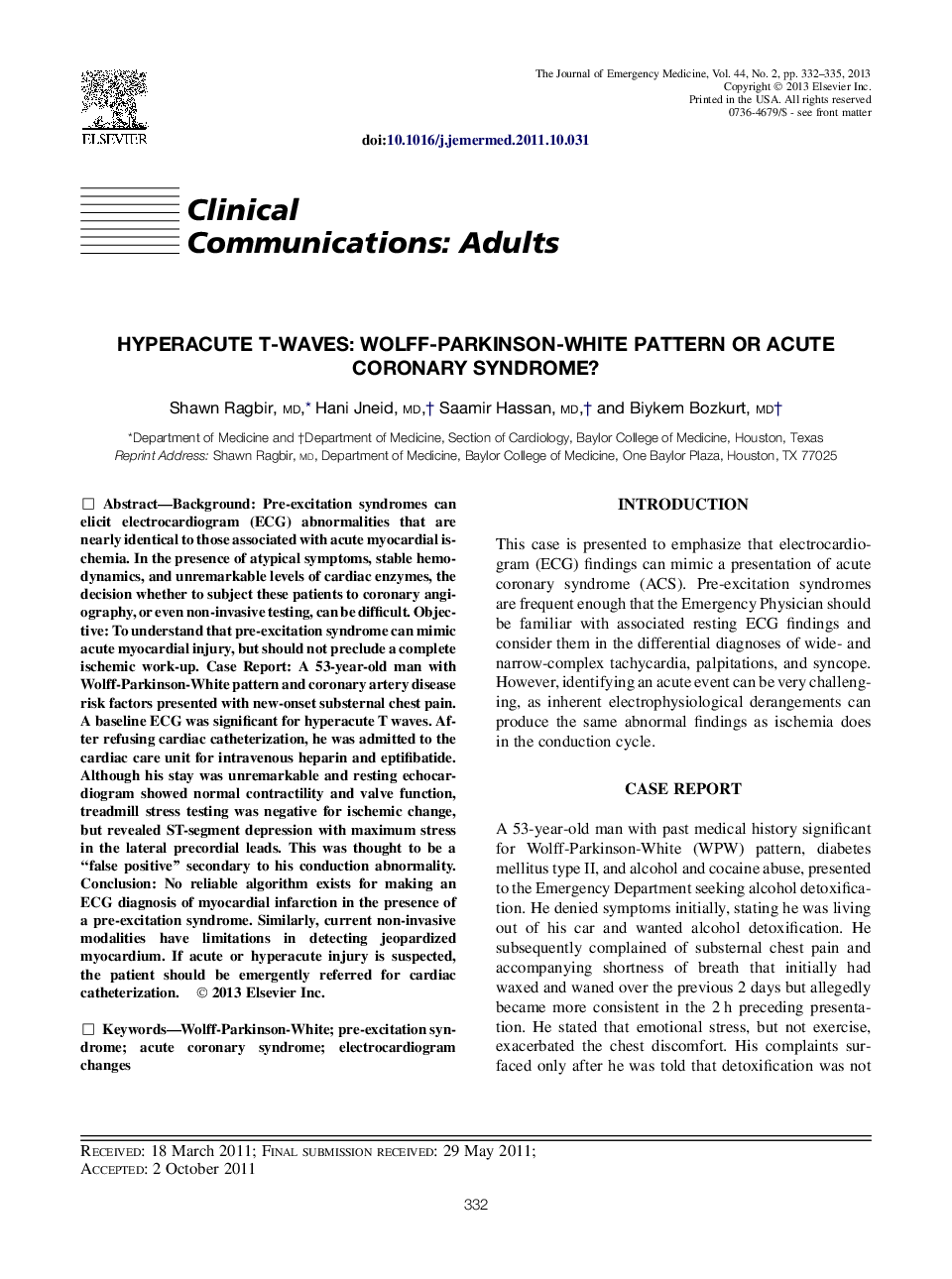| Article ID | Journal | Published Year | Pages | File Type |
|---|---|---|---|---|
| 3248297 | The Journal of Emergency Medicine | 2013 | 4 Pages |
BackgroundPre-excitation syndromes can elicit electrocardiogram (ECG) abnormalities that are nearly identical to those associated with acute myocardial ischemia. In the presence of atypical symptoms, stable hemodynamics, and unremarkable levels of cardiac enzymes, the decision whether to subject these patients to coronary angiography, or even non-invasive testing, can be difficult.ObjectiveTo understand that pre-excitation syndrome can mimic acute myocardial injury, but should not preclude a complete ischemic work-up.Case ReportA 53-year-old man with Wolff-Parkinson-White pattern and coronary artery disease risk factors presented with new-onset substernal chest pain. A baseline ECG was significant for hyperacute T waves. After refusing cardiac catheterization, he was admitted to the cardiac care unit for intravenous heparin and eptifibatide. Although his stay was unremarkable and resting echocardiogram showed normal contractility and valve function, treadmill stress testing was negative for ischemic change, but revealed ST-segment depression with maximum stress in the lateral precordial leads. This was thought to be a “false positive” secondary to his conduction abnormality.ConclusionNo reliable algorithm exists for making an ECG diagnosis of myocardial infarction in the presence of a pre-excitation syndrome. Similarly, current non-invasive modalities have limitations in detecting jeopardized myocardium. If acute or hyperacute injury is suspected, the patient should be emergently referred for cardiac catheterization.
